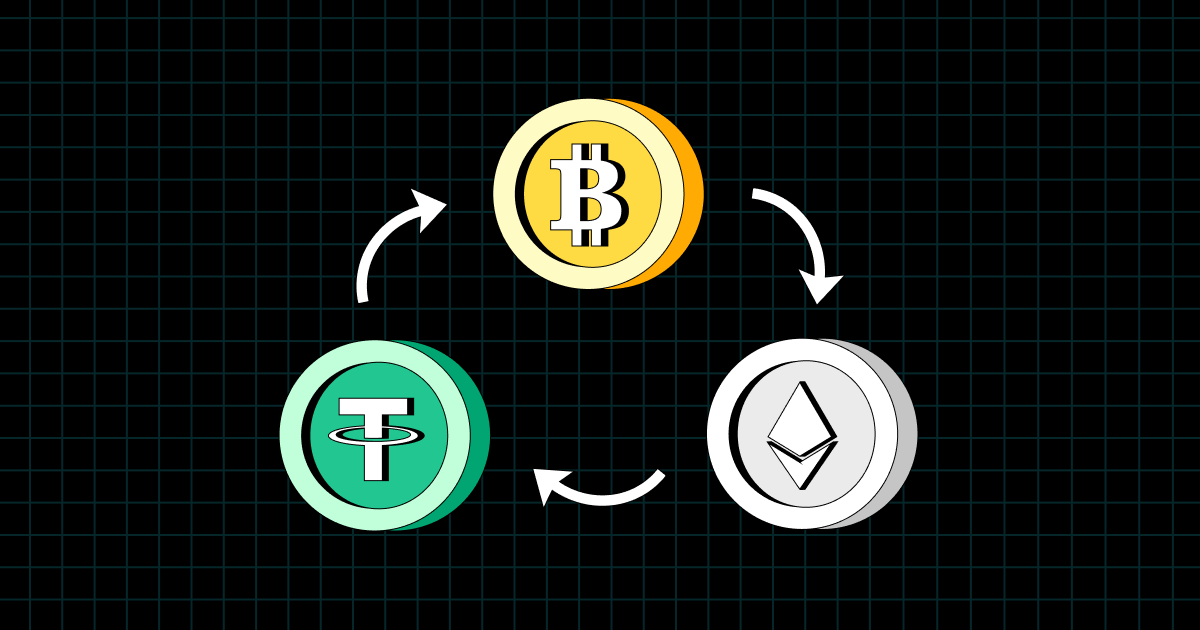The cryptocurrency market is reminiscent of the Wild West of the financial world: constant price fluctuations, uncertainty, but at the same time, enormous opportunities. In this context, cryptocurrency arbitrage is an ideal tool for those who want to use market volatility to their advantage. It is important to understand all types to understand how and where to maximize your profits on the Russian market. For people working in this field, knowledge is not just power: it is a way to outperform the competition, minimize risks, and maximize profits.
Cryptocurrency arbitrage basics for beginners
An economic term that originated in traditional markets and reached the world of cryptocurrencies. Its essence is simple: you profit from price differences between different exchanges or assets. For example, on the cryptocurrency market, it can look like this: you buy Bitcoin on one platform for $40,000 and sell it on another for $41,000. After deducting fees, you make a profit. In other words, this is a ticket to the world of trading for those who want to use simple systems with minimal risk.

For example, in Russia, some exchanges have prices that can differ significantly from those on international platforms. Local users can take advantage of this difference and make money.
Why is arbitrage so relevant in Russia?
The Russian cryptocurrency market has unique challenges, ranging from legal uncertainty to geopolitical instability. But the strange thing is that these factors provide opportunities for those who want to trade quickly and efficiently. Different exchanges, both international and local, have different prices, creating a favorable environment for arbitrage in cryptocurrencies within an exchange. For example, prices on large international platforms can be higher due to high demand, while prices on domestic platforms can be lower due to lower activity.
Types of cryptocurrency arbitrage: a detailed analysis
Cryptocurrency arbitrage between exchanges is a classic option where a trader buys digital currency on one exchange and sells it on another. This type of arbitrage is relevant in Russia because of the different platforms and price fluctuations that exist there. For example, you can buy Bitcoin on a Russian exchange for $45,000 and sell it on a Western exchange for $46,000. The advantages are clear.
How does this work in practice?
- Buy Bitcoin on a Russian exchange with a low commission.
- Listing of an asset on an international stock exchange.
- Sell Bitcoin on a foreign platform and receive profit minus the commission.
Triangular arbitrage: complex schemes for advanced traders
 A more complex strategy that uses three different cryptocurrency pairs on one or more exchanges. It is important to react quickly to exchange rate changes, because the essence of this arbitrage is to close the trading cycle with a profit by taking advantage of exchange rate differences between currencies.
A more complex strategy that uses three different cryptocurrency pairs on one or more exchanges. It is important to react quickly to exchange rate changes, because the essence of this arbitrage is to close the trading cycle with a profit by taking advantage of exchange rate differences between currencies.
Example: On an exchange, a trader buys Ethereum for Bitcoin, then sells Ethereum for USDT, and then exchanges USDT for Bitcoin. At the end of the cycle, the trader has more Bitcoin than at the beginning, due to the price volatility at each stage.
Advanced arbitrage techniques
Statistical and spatial. Let’s take a closer look at them.
Statistical arbitrage in cryptocurrencies: trading with mathematics
A strategy that requires a serious approach to data analysis. Traders who use this method rely on mathematical models that allow them to find correlations between the prices of different exchanges and cryptocurrencies. The programs analyze millions of trades and identify profitable arbitrage opportunities in real time. This type of arbitrage is only available to those who have automated trading systems and experience using algorithms.
Example: According to a mathematical analysis, a trader buys one cryptocurrency and sells another at the same time. Super-fast algorithms are used to profit from a small but stable price difference.
Space arbitrage: making money from global differences
The method uses price differences between exchanges in different geographical locations. The price difference between Bitcoin on an exchange in Asia and one in Europe can be up to several percent. This allows traders to profit from this price difference. This method requires knowledge of the global crypto market and the ability to react, as prices can change within minutes.
Example: A trader buys Bitcoins at 3:00 AM (Moscow time) on a Japanese exchange, when the price is at its lowest, and sells them a few hours later on an American exchange, when the price has risen.
Risks and opportunities of cryptocurrency arbitrage in Russia
First, the price can change within a fraction of a second during an ongoing transaction. Second, withdrawal fees can be higher than expected, which reduces profits. Third, we should not forget about tax and legal aspects, which are still a gray area in Russia.
How to minimize risks?

- Use exchanges with minimal fees.
- React quickly to exchange rate changes using automated tools.
- Work with reliable platforms and avoid fraudulent practices.
- Trade on highly liquid exchanges to avoid withdrawal delays.
Opportunities you should not miss
 Cryptocurrency arbitrage offers real profit opportunities, especially in the Russian market, where cryptocurrencies are not yet fully integrated into the financial system. Due to the unique situation associated with price differences on local and international exchanges, arbitrage has become an important tool for those who want to make money with cryptocurrencies.
Cryptocurrency arbitrage offers real profit opportunities, especially in the Russian market, where cryptocurrencies are not yet fully integrated into the financial system. Due to the unique situation associated with price differences on local and international exchanges, arbitrage has become an important tool for those who want to make money with cryptocurrencies.
 en
en  ru
ru  de
de  ar
ar  es
es  nl
nl  hi
hi  fr
fr  it
it  pt
pt  el
el 











